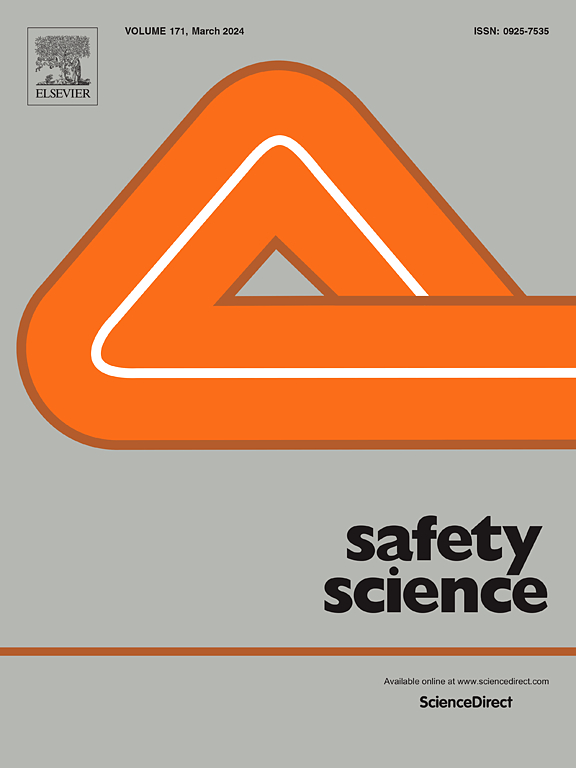区块链在建筑安全中的应用:机遇、挑战和未来方向
IF 5.4
1区 工程技术
Q1 ENGINEERING, INDUSTRIAL
引用次数: 0
摘要
建筑行业仍然是世界上最危险的行业之一,面临着持续的安全挑战,导致高事故率和死亡率。传统的安全管理系统往往存在效率低下、数据处理碎片化和缺乏透明度的问题,导致合规执行和安全监测的延迟。区块链技术以其分散、不可变、透明的特性,成为加强建筑安全管理的一种有前景的解决方案。本研究对区块链在建筑安全中的应用进行了系统综述,重点介绍了区块链在建筑安全中的应用现状、效益、挑战和未来的研究方向。使用Scopus和Web of Science数据库进行系统文献综述(SLR)。共选取了14项相关研究进行深入的定性和文献计量分析。研究结果将区块链在建筑安全中的应用分为五个研究集群:(i)安全检查和合规,(ii)风险和事故信息管理,(iii)基于激励的安全合规,(iv)区块链与人工智能和物联网的集成,以及(v)保护隐私的安全监控系统。该研究强调,区块链增强了安全合规自动化,提高了数据安全性,激励了工人的安全参与,并通过人工智能集成促进了实时监控。然而,采用的障碍包括可伸缩性限制、监管不确定性、高实现成本和互操作性挑战。该研究最后提出了一项研究议程,以解决这些挑战,并促进区块链在建筑安全中的广泛采用。研究结果为研究人员、行业从业者和政策制定者提供了实用的见解,以开发可扩展、高效和安全的区块链驱动的安全管理解决方案。本文章由计算机程序翻译,如有差异,请以英文原文为准。
State-of-the-Art review of blockchain applications for construction safety: Opportunities, challenges, and future directions
The construction industry remains one of the most hazardous sectors worldwide, facing persistent safety challenges that contribute to high rates of accidents and fatalities. Traditional safety management systems often suffer from inefficiencies, fragmented data handling, and lack of transparency, leading to delays in compliance enforcement and safety monitoring. Blockchain technology, with its decentralized, immutable, and transparent nature, has emerged as a promising solution to enhance construction safety management. This study conducts a systematic review of blockchain applications in construction safety, focusing on their current use cases, benefits, challenges, and future research directions. A systematic literature review (SLR) was conducted using Scopus and Web of Science databases. A total of 14 relevant studies were selected for in-depth qualitative and bibliometric analysis. The findings categorize blockchain applications in construction safety into five research clusters: (i) safety inspections and compliance, (ii) risk and accident information management, (iii) incentive-based safety compliance, (iv) blockchain integration with AI and IoT, and (v) privacy-preserving safety monitoring systems. The study highlights that blockchain enhances safety compliance automation, improves data security, incentivizes worker safety participation, and facilitates real-time monitoring through AI integration. However, barriers to adoption include scalability limitations, regulatory uncertainties, high implementation costs, and interoperability challenges. The study concludes by proposing a research agenda to address these challenges and facilitate broader adoption of blockchain in construction safety. The findings offer practical insights for researchers, industry practitioners, and policymakers to develop scalable, efficient, and secure blockchain-driven safety management solutions.
求助全文
通过发布文献求助,成功后即可免费获取论文全文。
去求助
来源期刊

Safety Science
管理科学-工程:工业
CiteScore
13.00
自引率
9.80%
发文量
335
审稿时长
53 days
期刊介绍:
Safety Science is multidisciplinary. Its contributors and its audience range from social scientists to engineers. The journal covers the physics and engineering of safety; its social, policy and organizational aspects; the assessment, management and communication of risks; the effectiveness of control and management techniques for safety; standardization, legislation, inspection, insurance, costing aspects, human behavior and safety and the like. Papers addressing the interfaces between technology, people and organizations are especially welcome.
 求助内容:
求助内容: 应助结果提醒方式:
应助结果提醒方式:


